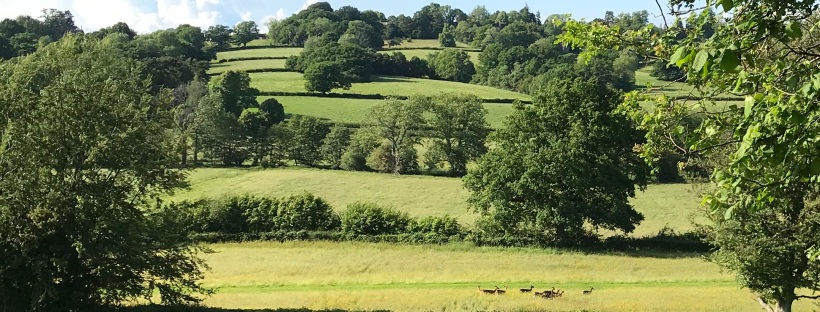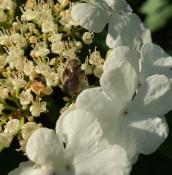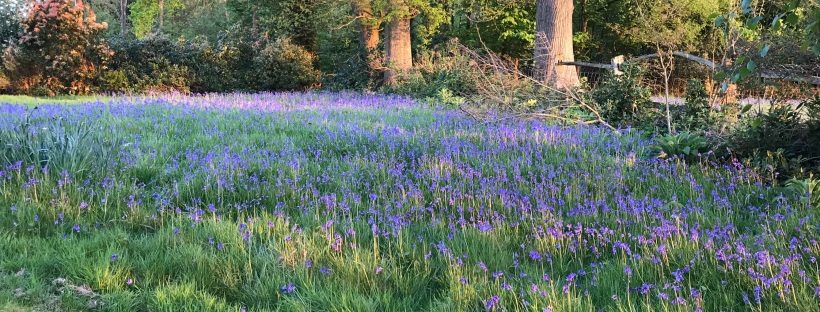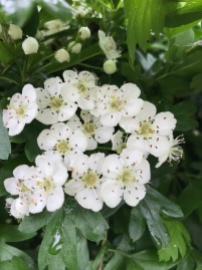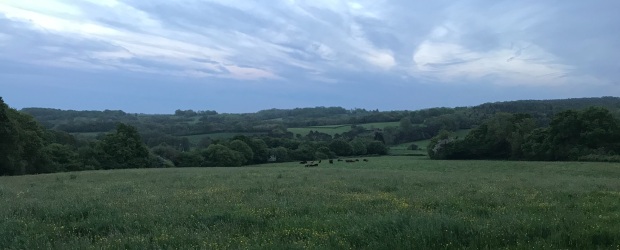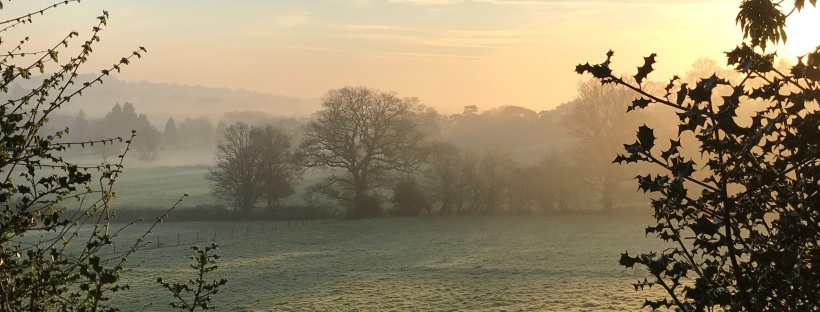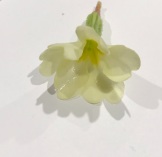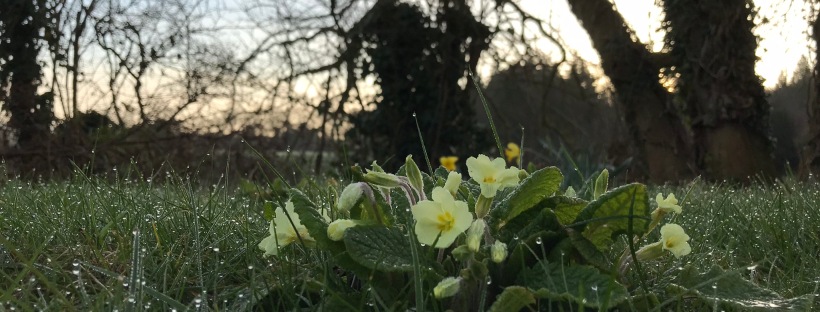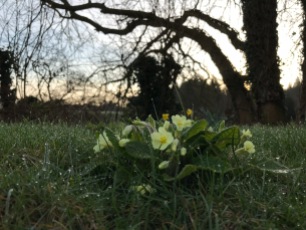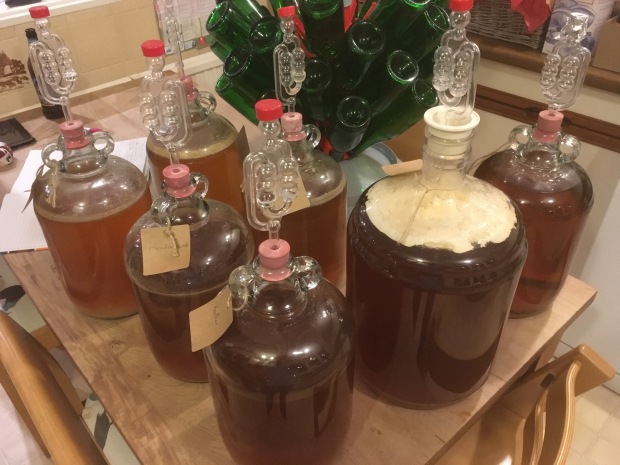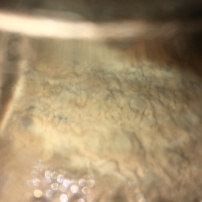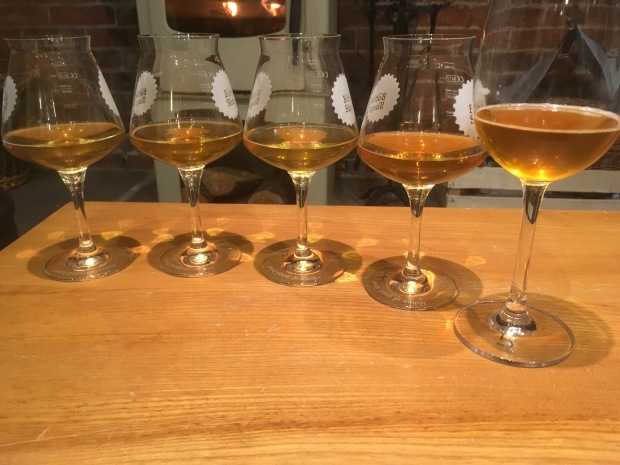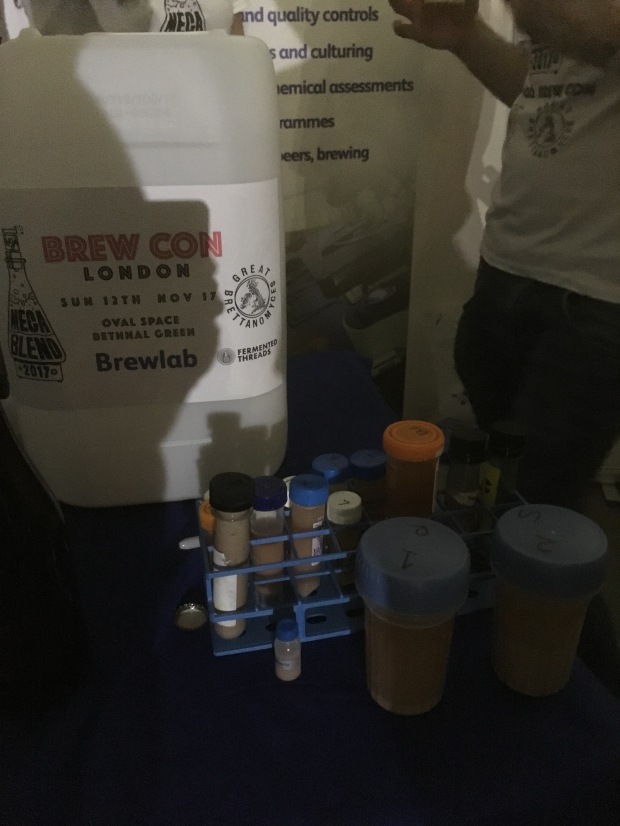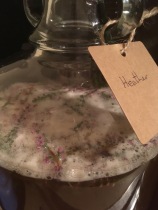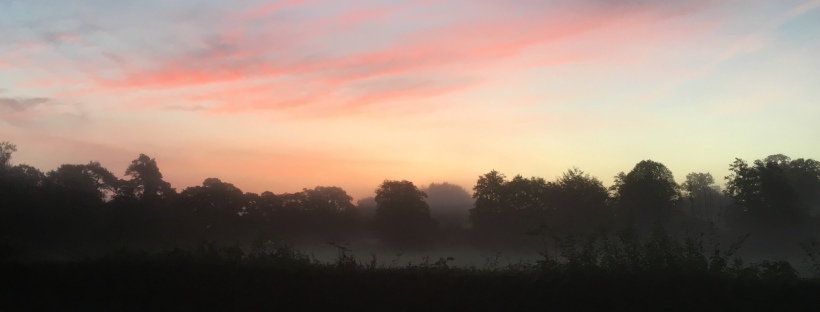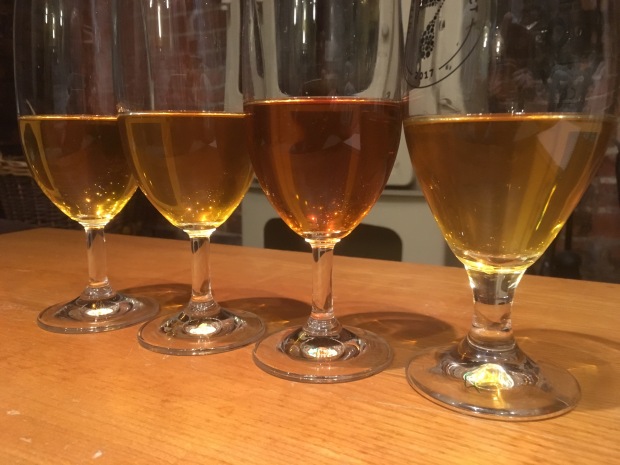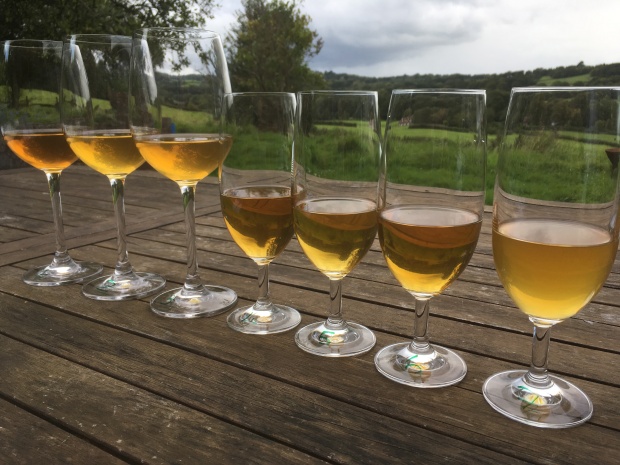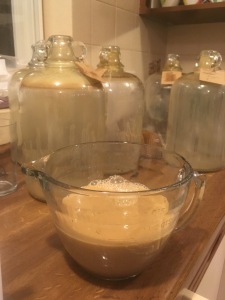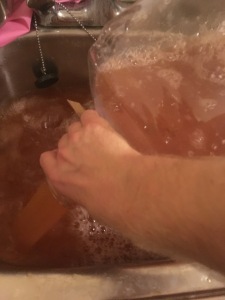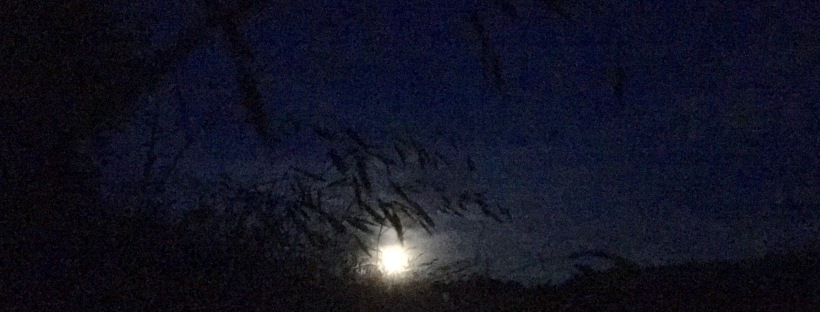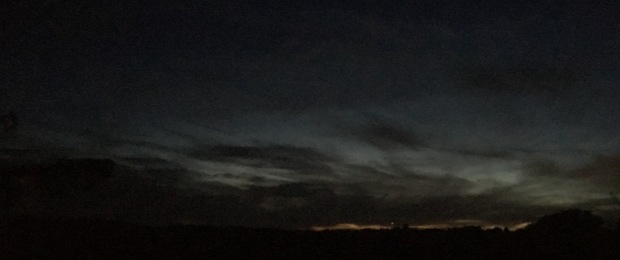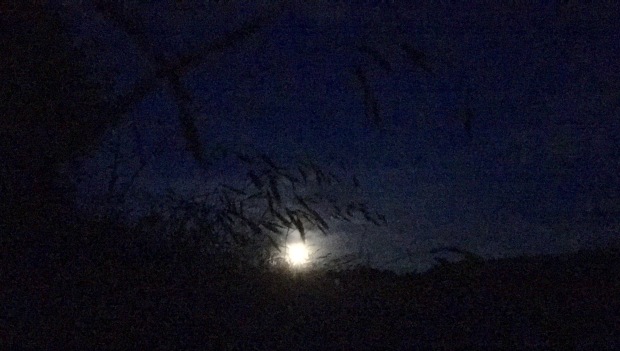A lot’s changed around me between May and June. The apple blossom and hawthorn had it’s day as did a number of yellow flowers that punctuate the rich green of late spring: archangel, broom, buttercup and what I think is garden rocket. The blues, pinks and purples of bugle, vetch, woody nightshade, speedwell, herb robert red campions and common spotted orchid appeared and were then upstaged by the whites of elderflower, dog and field rose, bramble and various umbellifers. The skies and views of the landscape were pretty special too. Distant thunderstorms provided light-shows at sunset in an otherwise cloudless sky. I sat and watched the mist creeping up the valley as the sun went down. Initially forming small pools, revealing depressions in the flood plain that usually go unnoticed, then silently enveloping each contour.
The fauna has been more overt than usual. Curious fox cubs have been beating the bounds. A lone roe deer spent the afternoon in the two meadows satelliting the house. Two cuckoos chased each other through the tree tops. Mindful from last year, I have been listening out for the nightjar. We heard it one evening and slipped out into the woods around 10pm and heard them churring and saw their kestrel-like shape darting between the trees and circling the clearing. I also paused on the track when a small blob-shaped shadow moved on the track in front of me. It turned out to be a young badger, which carried on past me within a few meters with no apparent awareness I was there. Another day, in the early evening, two young badgers chased each other across the track in front of us. The barn owl has also made a couple of rare appearances, patrolling the meadow boundaries and hedge-lines.
Simon from Beer Boars invited me along to chat about my project to the group. It was a great way for me to gather my thoughts and summarise what I’ve been doing and what I’m trying to do. Up in Hackney Wick we tasted 10 of my beers including some single flower ferments, blended ales and ales from the yeast blend. I asked them to fill in short feedback forms and a really appreciated the comments made by the tasting panel.
My urban yeast hunt from Brick Lane continues with Kill the Cat. The first samples weren’t hugely successful with a lot of mould and aromas I described as sweaty, bin-like, cabbage-like, nasty B-O, meaty….. some were more promising and kept. The sensory testing notes can be found here. The proportion of dirty samples was certainly higher than at home. Maybe the urban environment is just dirtier.
I stepped the more promising tubes up to 250ml with unhopped acidified wort pH 4.3 and left for several weeks….. and nothing happened; the gravity in all four samples stayed at 1.030 – very odd. Maybe the acid inhibited the yeast? All smelt sweet and pleasant. The sensory testing notes are here. The pH had dropped in two, including the dandelion which had what looked like a scoby (symbiotic culture of bacteria and yeast), and I decided to give them a second chance with 500ml hopped unacidified wort. They are now fermenting. In retrospect I should have used unhopped wort because I’ve probably inhibited the bacteria that was promising. I also should have used 250ml starters again because the yeast hadn’t propagated in the previous step. I possibly should have given the others a second chance also and then maybe revived those promising saison-like aromas.
In the meantime I went back to Brick Lane and took more samples, this time with hopped wort. I collected field rose, red clover, mallow, elderflower and bramble and allowed to ferment for two weeks. These were more promising and the notes can be found here. The kept samples were stepped up to 250ml with hopped wort. All started fermenting quickly.
It may be relevant that the bramble was next to the roadside, so picked up more dust and grime. I have a little theory, completely lacking in any fact, that hop use in the 15th and 16th centuries might have coincided with the growing dirtiness of towns and hops were most effective at keeping ales clean while also tasting nice – i.e. it was hygiene and necessity that drove the hop takeover rather than tastes and style preferences. If there are any historians out there, feel free to put me back in my box. Maybe a study comparing hop usage to urbanisation and lack of sanitation across europe would be interesting.
Back to my own funky flowers, I tested and propagated wood sorrel, violet and primrose. The notes are here. Three were propagated up to 500ml with unhopped wort. I don’t think it’s conclusive whether the water bath encouraged acidity or not. New flowers have recently been collected. These were elderflower, bramble and field rose and were placed into centrifuge tubes with unhopped wort.
I’m tentatively optimistic about the 1950s Yorkshire yeast. Of the two initial samples, one did nothing but the other fermented quickly with a big krausen and floculated well leaving good clarity. The final gravity was 1.006, a pH of 4.1 and a fruity smell and taste. I’ve stepped this up to 500ml and have also started a third sample. Both are fermenting well. What I don’t know is how to prove these are the 1950s brewing yeast and not just a contamination.
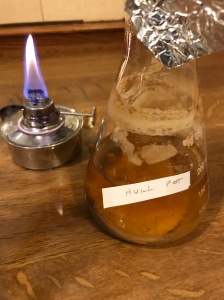
My brewing time has been taken up by my cousin’s wedding beer. The last three brew days have been two trial brews and a double brew for the wedding. The trial beers were good. One was a hoppy pale ale under 4%. The other is a strongish Yorkshire bitter at 5%. I had thought it might be nice to use the resurrected Yorkshire yeast for the Yorkshire bitter but timing didn’t work out. I’ll have to brew something for the family post wedding. I have something in mind.
Finally I went on a foraging course with Sarah from Wild Feast . We spent four hours exploring the meadows, hedgerows and woods of Sussex. I love the different perspective one gets when exploring at a different pace. In this case we slowed it right down and I appreciated just how much more there is to see. I learnt a lot from Sarah: identified plants I didn’t know; gained confidence with plants I sort of knew; discovered flavours from plants I knew but didn’t appreciate; and learnt ways to use them I hadn’t considered. Sarah brought some food, liquors and infusions she had prepared, which gave me ideas of how complementary favours could be transferred to beer. I really enjoyed the experience at it was a pleasure to meet Sarah. Hopefully I will brew up some foraged recipes in the coming months.
